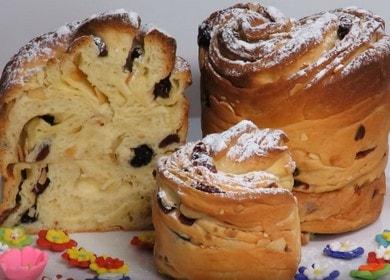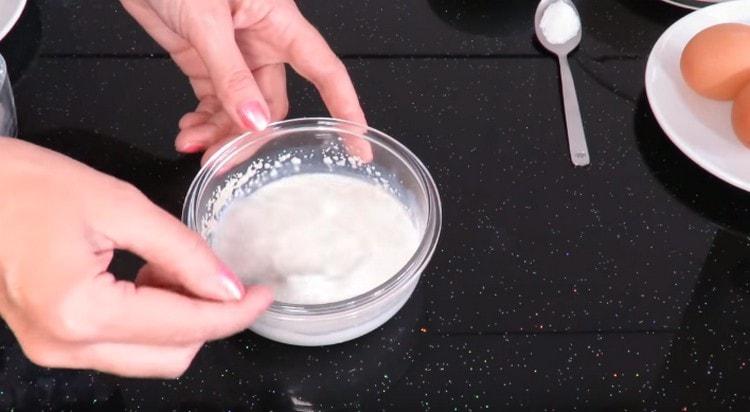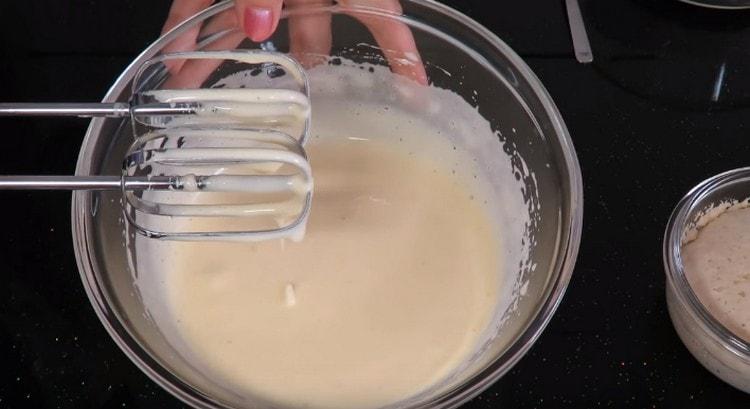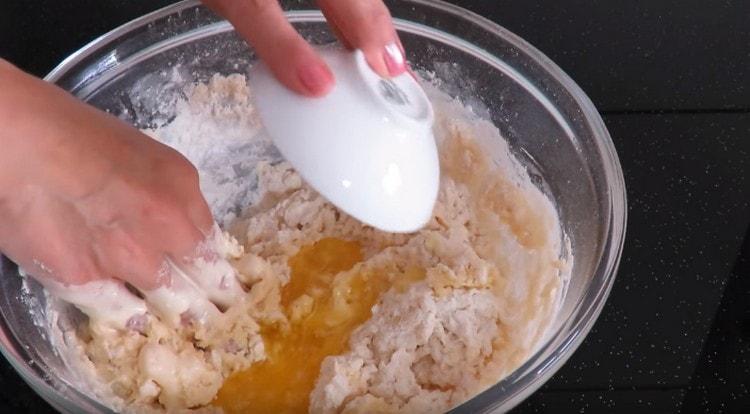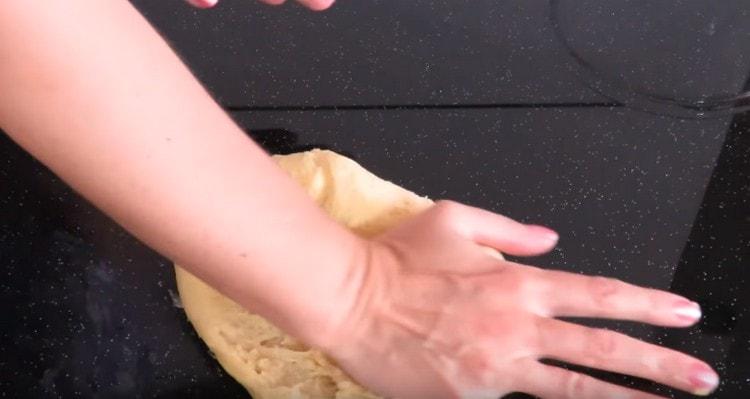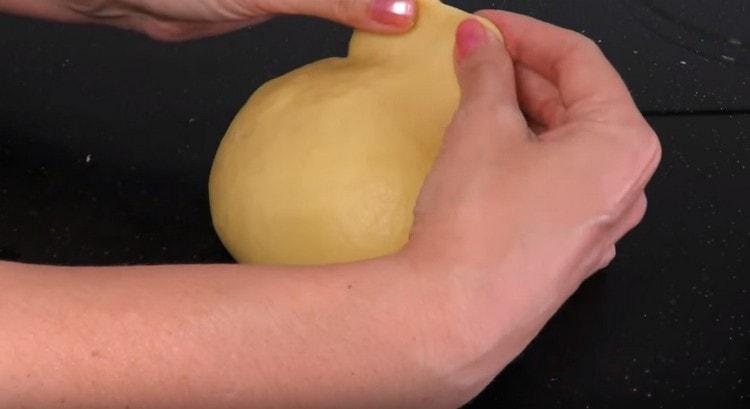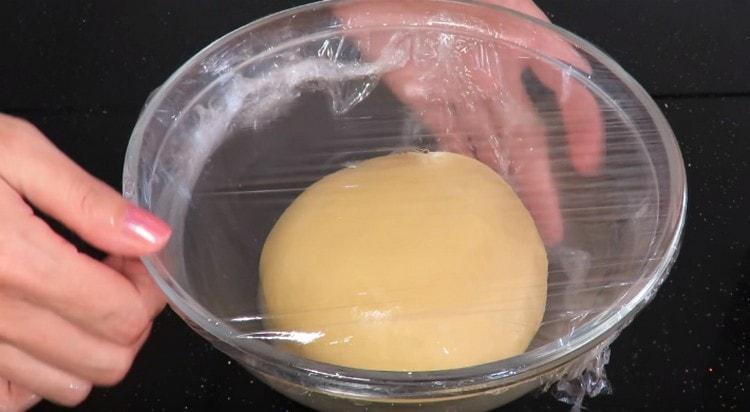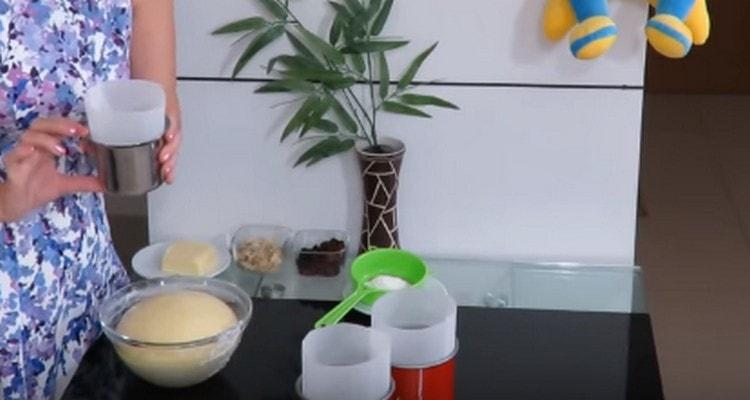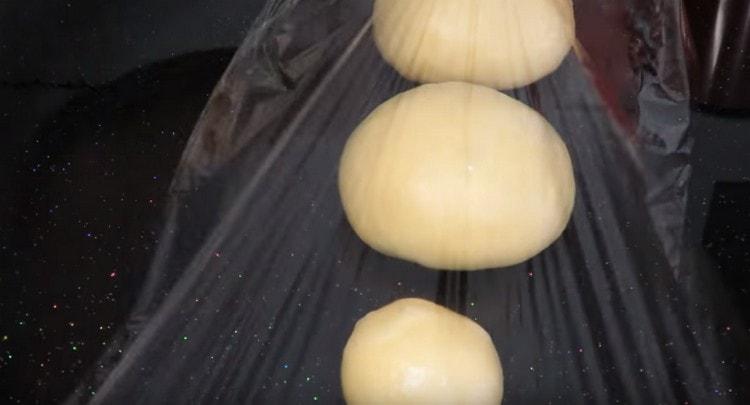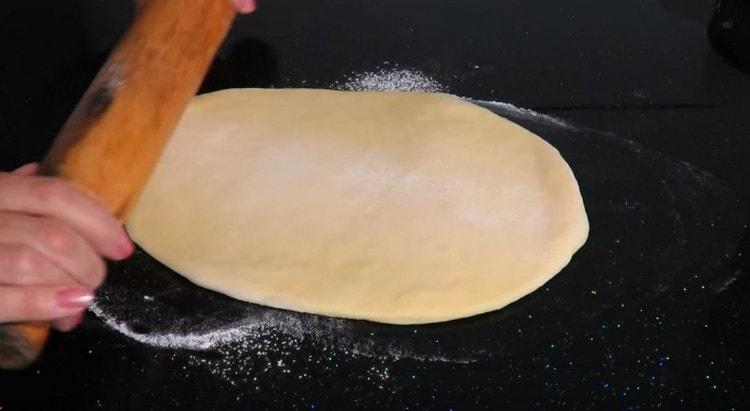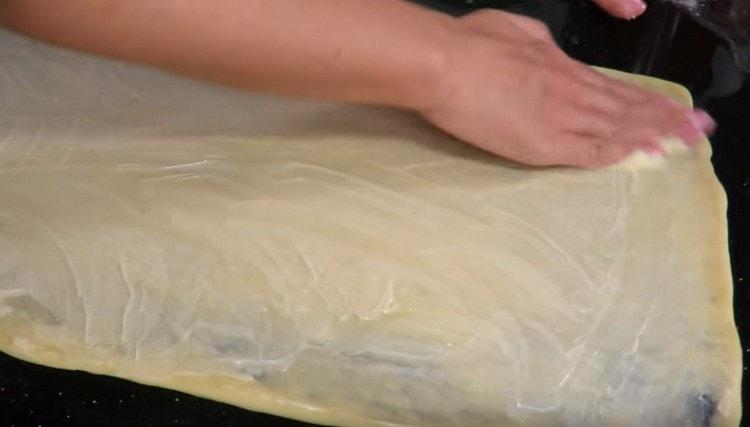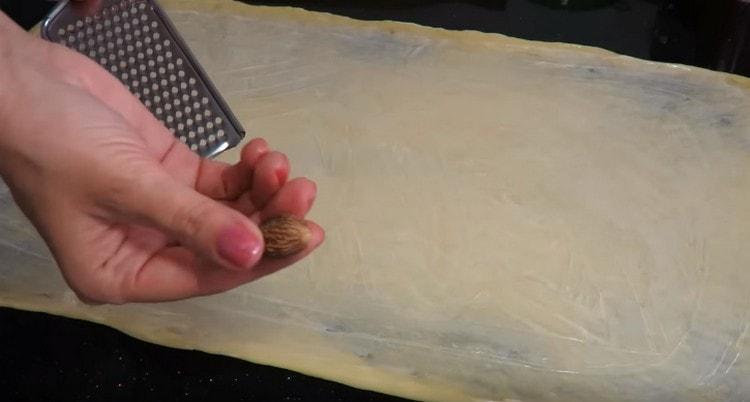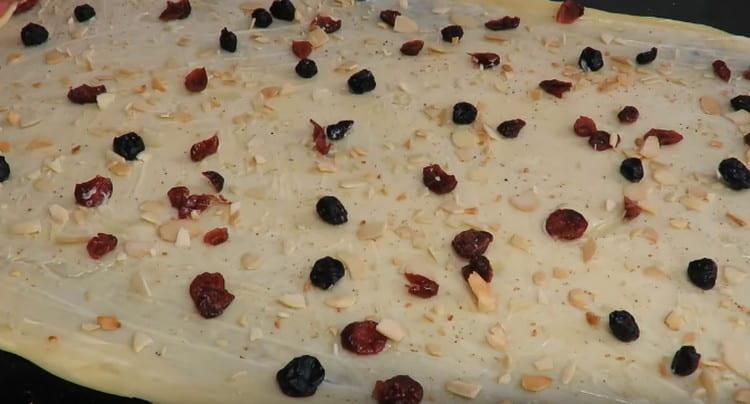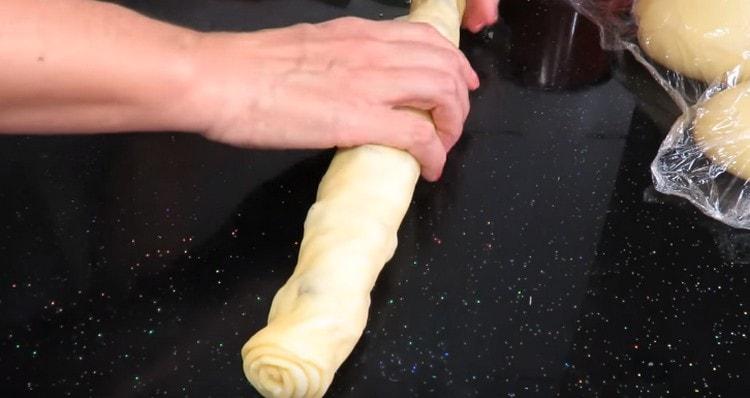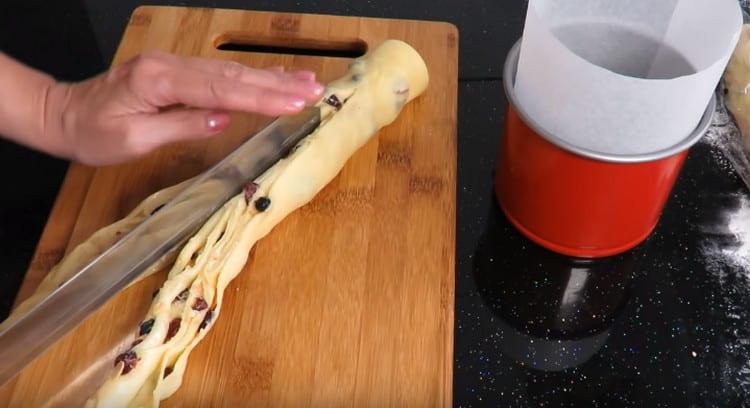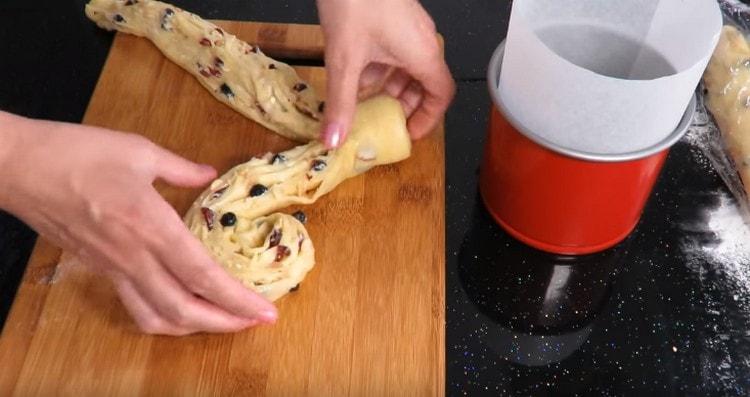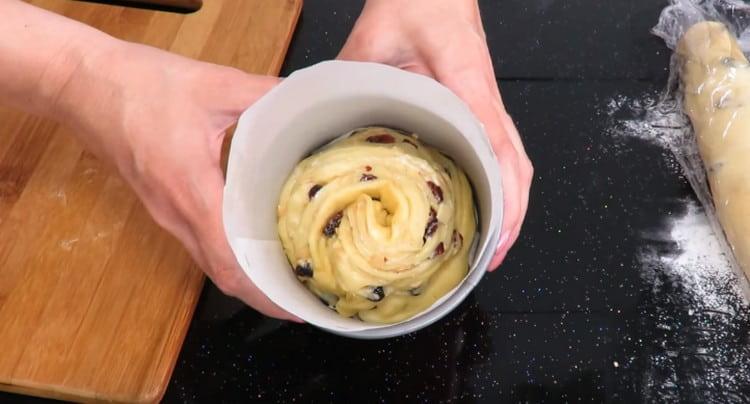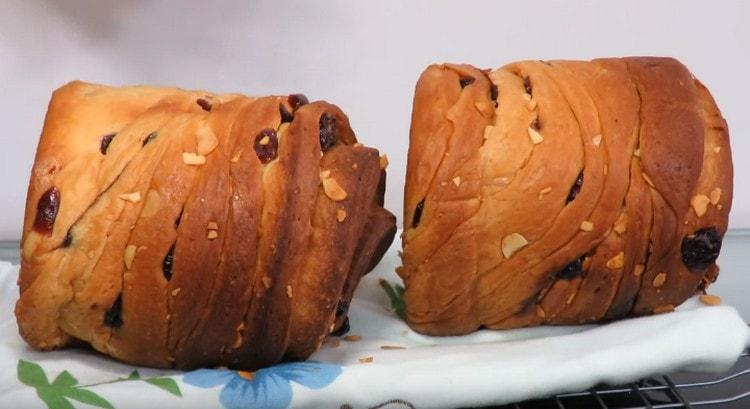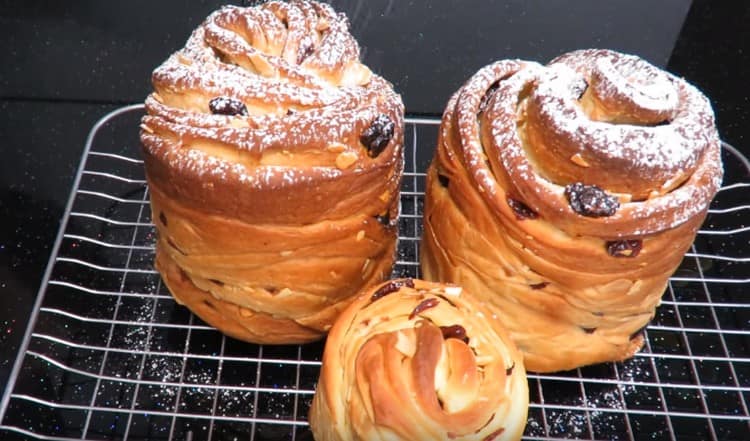Kitchen appliances and utensils:
- plate;
- oven;
- kitchen scales;
- mixer;
- forms for Easter cakes;
- a baking sheet or grid;
- bowls for ingredients (3 pcs.);
- teaspoon and tablespoon;
- silicone spatula;
- rolling pin;
- cling film;
- parchment paper;
- aluminum foil;
- kitchen towel;
- board;
- kitchen knife;
- potholders.
Ingredients
| Product | amount |
| Premium flour | 350 g |
| Warm milk | 80 g |
| Dry yeast | 6 g |
| Sugar | 80 g |
| Salt | 0.5 tsp |
| Chicken eggs | 1 PC. |
| Chicken Yolk | 2 pcs. |
| Melted butter | 40 g |
| Juice of orange, passion fruit | 30 ml |
| Softened butter | 100-125 g |
| Cranberries, blueberries, raisins, candied fruits (dried) | 100 g |
| Almond plate | 50 g |
| Nutmeg | 1 PC. |
| Zest of lemon, orange, vanilla | taste |
Step cooking
- Pour 80 g of warm milk into a small bowl, add 10 g of sugar, 6 g of dry yeast, mix well and leave for 10-15 minutes to activate the yeast and grow a magnificent “hat”. This checks the quality of the yeast, and you can be sure that the dough is suitable.

- Drive one chicken egg and 2 yolks into another bowl, add 70 g of sugar and beat the ingredients with a mixer until a thick and lush white mass is obtained. It is important that the eggs are at room temperature, so it is better to lay them out of the refrigerator a couple of hours before starting to cook.

- Sift 350 g of flour into another large bowl, add 0.5 tsp. salt and mix well.

- In the dry mixture, make a deepening, pour the resulting dough, beaten eggs, 30 ml of passion fruit juice or orange (you can replace this ingredient with warm milk) and start kneading the dough.

- Then add 40 g of pre-melted butter and continue kneading the dough.

- When it comes together in one lump, put the dough on the work surface and continue to knead with your hands for about 10 more minutes. It will still be sticky and may stick to the surface of the table, but you don’t need to add more flour.

- The finished base for Easter cakes should be elastic and soft, because the dough will have to be stretched.

- A bowl in which the dough was kneaded, greased with butter or vegetable oil, lay the base for Easter cakes, cover the bowl with cling film on top and leave it in a warm place for about 60 minutes so that the dough can double.

- Before proceeding to the formation of Easter cakes, it is necessary to prepare the forms. You will need small 3 forms with an approximate diameter of 10-12 cm, the bottom and edges of which must be lined with parchment paper. If the molds are small in height, it can also be extended with paper.

- Divide the dough into 3 parts, depending on the size of the forms, if they are the same for you, then you need to divide into 3 identical parts. Cover with cling film and leave for 10 minutes.

- Sprinkle the working surface with flour and roll each piece into a thin long layer, using a rolling pin.

- Spread softened butter on top (about 30-40 g per layer) and spread evenly over the entire surface of the dough.

- For flavor, grate nutmeg and distribute it throughout the dough.

- Then sprinkle with cranberries, blueberries, raisins, candied fruits and almond plates, as you like. For three Easter cakes, 100 g of dried berries and 50 g of almonds will be enough.

- Gently twist each layer of dough into a tight roll, cover with cling film and leave for 10 minutes to rest the dough.

- Put the roll on the board, cut into 2 equal parts, but not completely.

- Roll up so that the layers are outside.

- Put the formed cakes in the form and send to the oven, preheated to 200 degrees, for 10 minutes. Then cover the molds with foil on top and continue baking at a temperature of 180 degrees for 20-25 minutes. Each housewife should orient herself, knowing the nuances of her oven.

- Gently lay the finished baking on a clean towel and allow to cool for several minutes.

- If desired, you can sprinkle Easter cakes on top with icing sugar.

Video recipe
To see each stage of cooking Kraffin cakes, we recommend that you also read this video.
